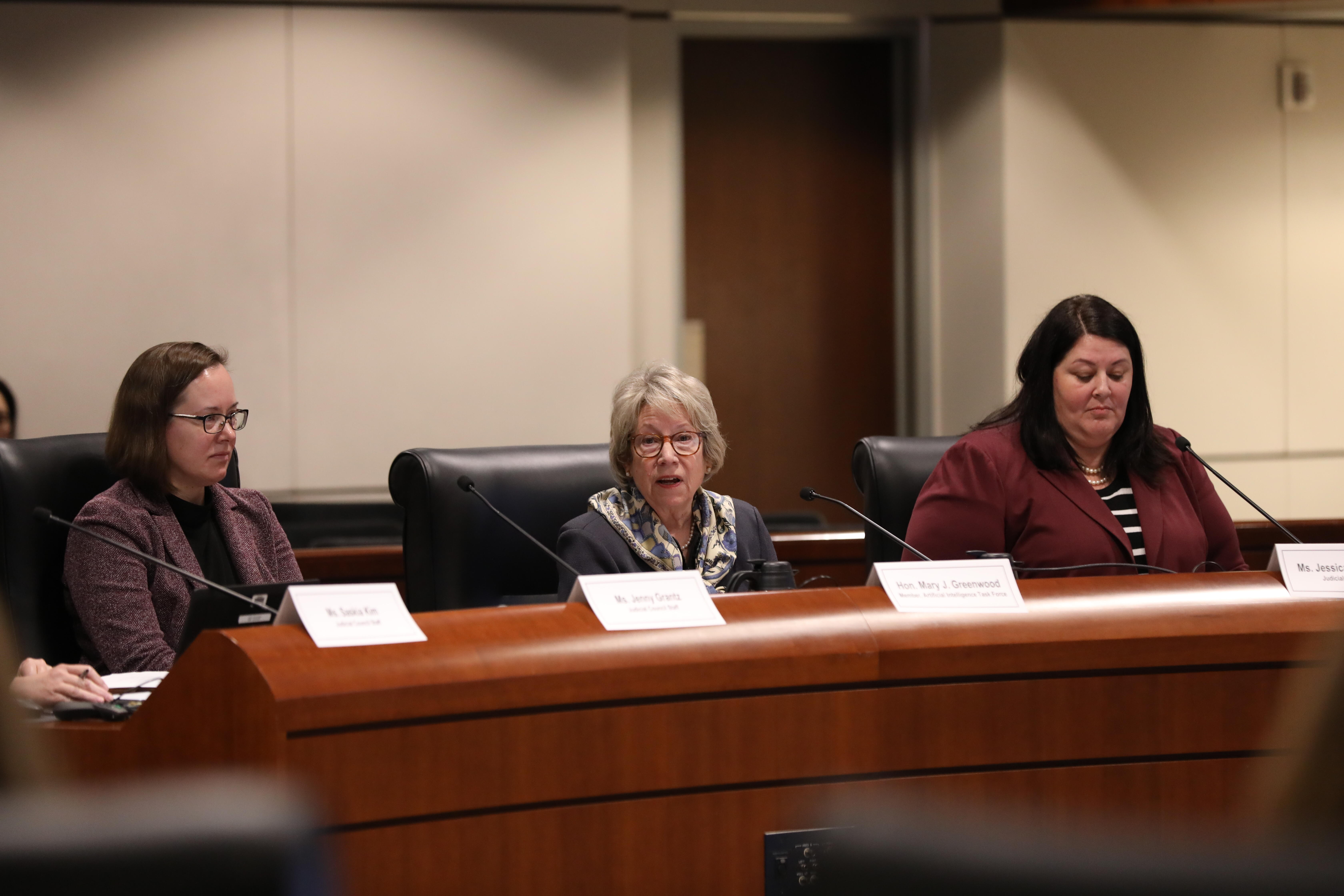
Council Receives Preview of New Model Policy That Provides Guidelines, Safeguards on Use of Generative AI by Courts
SAN FRANCISCO—At its business meeting today, the Judicial Council got a preview of a new model policy that will help ensure the responsible and safe use of generative AI by California courts.
Courts will be able to adopt or modify the model policy as needed.
“This is a positive step in a rapidly developing area,” said Chief Justice Patricia Guerrero, who last year announced the launch of the Artificial Intelligence Task Force to evaluate generative AI for its potential benefits to courts and court users while mitigating risks to safeguard the public. “We must balance the issues you’ve identified: accountability, transparency, confidentiality, and privacy protection.”
Model AI Policy Includes Court Input, Creates Safeguards
To ensure input from the policy’s eventual users, the task force surveyed state courts. The task force asked courts about any existing policies and ways in which they are (or are not) using generative AI.
“We learned what topics courts intended to cover in their use policies, but also that many were waiting for guidance from the task force and the Judicial Council before drafting their own,” said Justice Mary J. Greenwood, a member of the AI task force. “That helped us establish what the task force should be working on.”
Justice Greenwood shared that the model policy will provide courts with general guidelines for using generative AI in their daily, non-adjudicative duties, which includes direction on:
- Reviewing generative AI material for accuracy, completeness, errors, and hallucinations
- Ensuring AI material is not biased, offensive, or harmful
- Disclosing if generative AI outputs make up a substantial portion of a written or visual work provided to the public
Working on More AI Guidance for Court Staff and Judges
In addition to introducing the model AI policy, the task force also detailed its ongoing work. The task force plans to develop further direction for courts adopting their own generative AI policies, as well as guidance for judicial officers using AI in their adjudicative role.
The task force hopes to develop a rule of court and a standard of judicial administration on these additional issues in the coming months. Watch
Other Items on Council Meeting Agenda:
Caseflow Management Update: The chairs of the council’s Trial Court Presiding Judges Advisory Committee and Court Executives Advisory Committee told meeting attendees that effective caseflow management is “a duty of both judges and court executive officers” and that “resolving cases in a timely manner is critical to ensuring court users’ rights are protected.” The presenters also shared that courts use technology and data to measure caseflow and to help them ensure compliance with standards for the timely disposition of cases. A council caseflow management subcommittee will convene in March to continue working on the issue and will keep the council updated on its progress. Watch
Certification Programs for American Sign Language (ASL) Court Interpreters: To help increase the number of ASL interpreters, the council approved revised guidelines to modernize the application process for program certification, support the recognition of additional ASL court interpreter testing entities as they become available, and maintain rigorous certification standards while expanding the pool of qualified interpreters. ASL interpreting is the fourth-most interpreted language in the California courts. Watch
Addressing Costs to Provide Court Interpreters: The council voted to augment its funding for court interpreters to address shortfalls due to increasing costs and expenses. The allocations will help maintain current levels of interpreter services for court users. Watch
Funding for Courthouse Lactation Spaces: The council approved a report to the Legislature that details how the judicial branch has added 32 new lactation spaces for the public at its courthouses, as well as plans to complete an additional 71 in the next 18 months. More state funding is needed to address the remaining, assessed need for an additional 154 more lactation spaces in superior court facilities statewide. Watch
Partial Restoration of Trial Court Operations Funding: The council approved the allocation of the approximately $42 million funding restoration provided by the state to partially offset the $97 million reduction to trial court operations funding included in the Budget Act of 2024. The funding restoration will help courts restore services and expand clerk counter hours for the public that were decreased in response to the $97 million reduction. Watch
New Judicial Council Member Sworn in: Chief Justice Guerrero swore in the council’s newest member Assistant Presiding Judge Ricardo R. Ocampo, whose term on the council began Jan. 1, 2025, and will run to Sept. 14, 2027. He replaces Judge Michelle Williams Court, who was appointed to the federal bench in November 2024. Watch
The complete meeting agenda and council reports are posted to the California Courts Meeting Information Center--an archived webcast of today’s meeting will be posted to the center as soon as it is available.